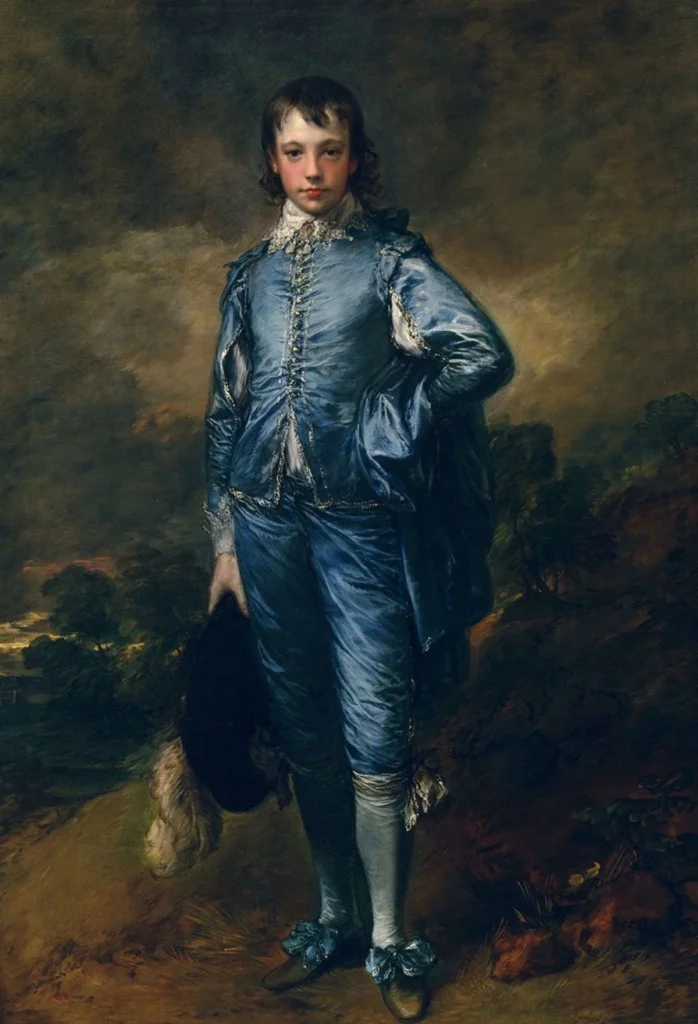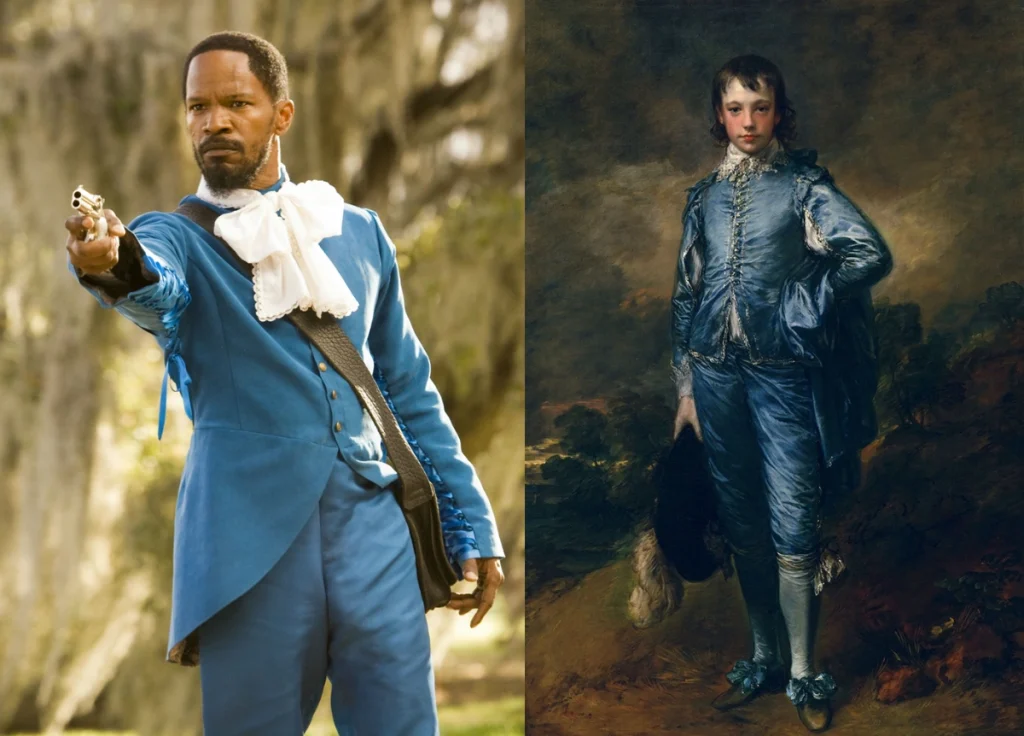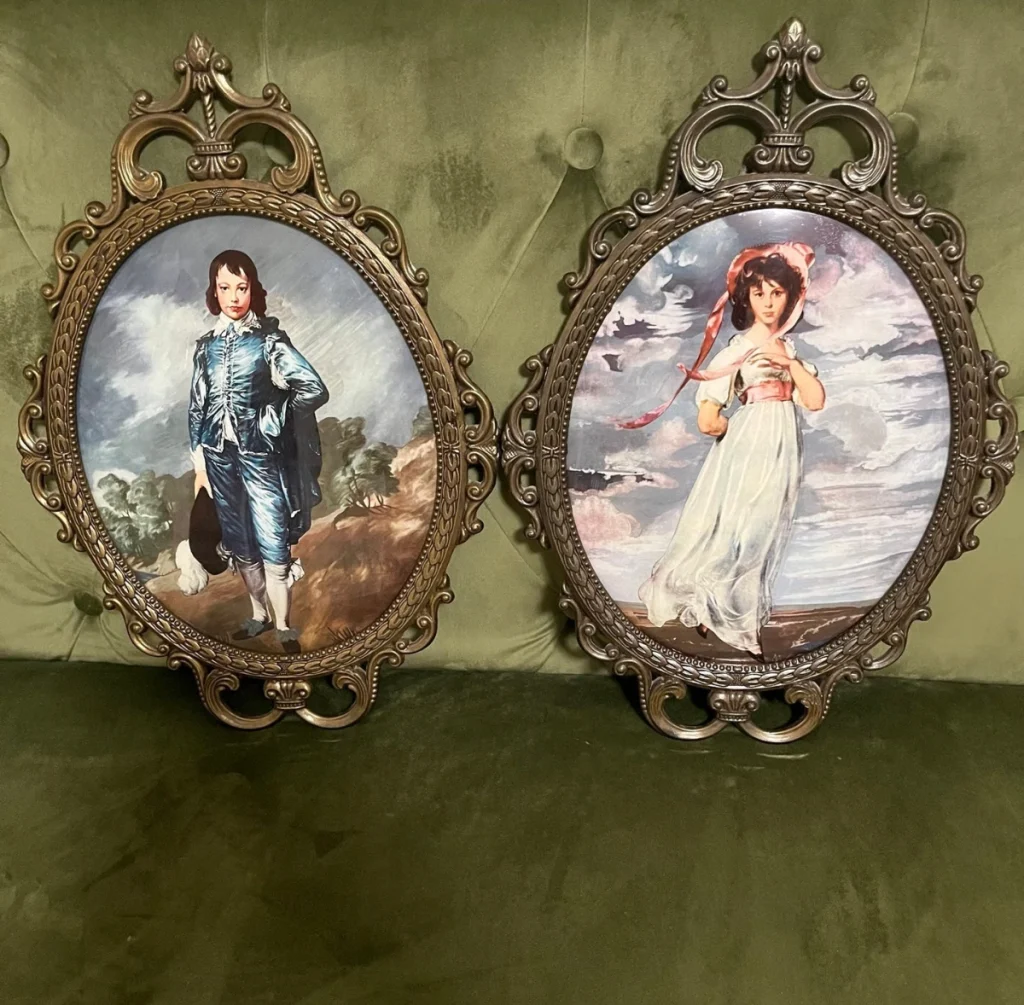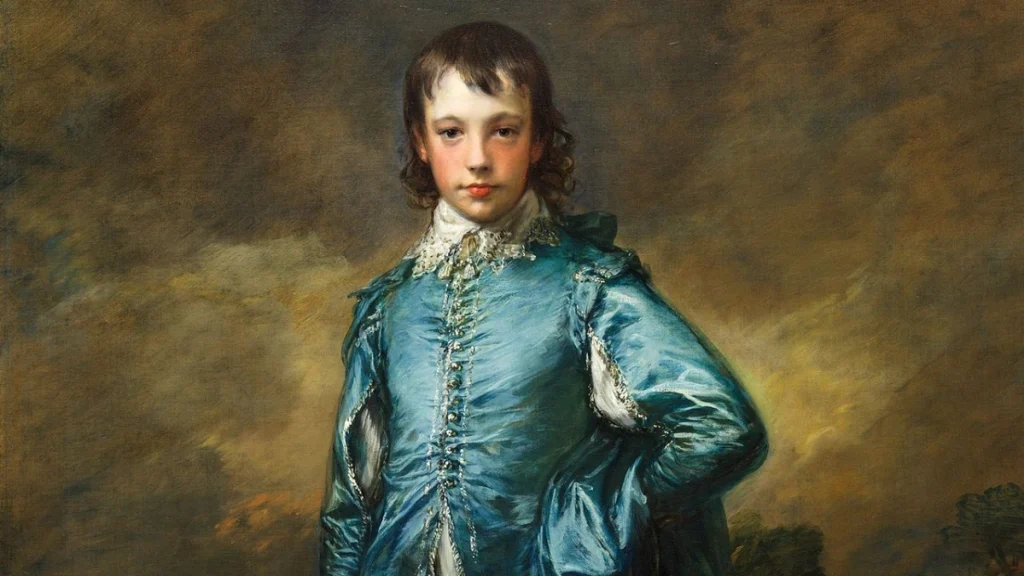Why is The Blue Boy Still Alluring?
Few paintings in Western art history have captured the public imagination, such as The Blue Boy by Thomas Gainsborough. This iconic 18th-century portrait continues to inspire artists, fashion designers, and cultural theorists alike. With its vivid use of blue, exquisite brushwork, and ongoing influence on gender and fashion discourse, The Blue Boy is a masterpiece of British portraiture and a symbol of artistic innovation.
In this article, we explore the fascinating history of The Blue Boy, its stylistic significance, and its deeper cultural impact, from Rococo fashion to modern debates about gender norms.
A Brief History of The Blue Boy by Thomas Gainsborough
Painted in 1770 by renowned English artist Thomas Gainsborough, The Blue Boy is a celebrated example of the Rococo art style. Influenced by the grand portraits of Anthony van Dyck, Gainsborough created a striking composition that emphasised elegance, theatricality, and artistic flair.

Courtesy – Wikipedia
Originally believed to depict Jonathan Buttall, the son of a wealthy merchant, the identity of The Blue Boy’s subject remains debated. Some art historians suggest the model may have been Gainsborough’s nephew, Gainsborough Dupont, who often assisted in his studio.
In 1921, the painting was purchased by American railroad magnate Henry E. Huntington for an astounding $728,000, making it the most expensive artwork sold at the time. Today, The Blue Boy is housed at the Huntington Library, Art Museum, and Botanical Gardens in San Marino, California.
The Power of Blue: Colour Theory, Symbolism, and Subversion
What immediately captures viewers is Gainsborough’s masterful use of blue hues, from deep indigo to pale sky blue. At a time when warm tones dominated the focal areas of paintings and cooler shades were relegated to backgrounds, Gainsborough flipped convention on its head, using vibrant blues for the central figure and warmer earth tones for the background.

The luxurious blue costume also defies the artistic norms of the Georgian era and subtly references the Whig political party, known for their distinctive blue colours. Moreover, the fashion depicted in the painting, a satin suit with lace trims, is now a vital reference point in fashion history, costume design, and visual culture.
A Technical Marvel: Gainsborough’s Brushwork and Composition
The Blue Boy showcases Gainsborough’s extraordinary technical skill. Every fold of satin and every glint of lace is rendered with meticulous detail. The subject is painted in a three-quarter pose, confidently gazing at the viewer, set against a moody, classical landscape. This composition allows for a harmonious interplay between figure and setting, enhancing the painting’s overall balance and visual drama.
Gender, Identity, and Cultural Impact
The Blue Boy has long been central to conversations about gender representation in art. The lavish, ornate costume challenges the austere norms of masculinity in the 18th century, suggesting a fluidity of gender expression rarely acknowledged in that period.

Courtesy – Shaab Muni
This painting is frequently discussed alongside Thomas Lawrence’s Pinkie, painted in the 1790s, even though the two were created by different artists and decades apart. Together, the pairing is often used to reinforce or challenge the gender binary expressed through colours, “blue is for boys” and “pink is for girls.”
The Blue Boy’s influence stretches into pop culture and cinema, notably inspiring Django’s costume in Quentin Tarantino’s Django Unchained, underlining its relevance across centuries.
Why The Blue Boy Still Matters
More than just a stunning portrait, Thomas Gainsborough’s The Blue Boy remains a landmark in art history, gender discourse, and fashion studies. It exemplifies how colour, composition, and historical context converge to create a work of lasting cultural significance.
As viewers continue to engage with its layers of meaning, from its Rococo roots to its bold statement on identity, The Blue Boy stands not just as a testament to Gainsborough’s genius but as a living dialogue between past and present, tradition and transformation.
Image – Thomas Gainsborough’s The Blue Boy. Courtesy – BBC





